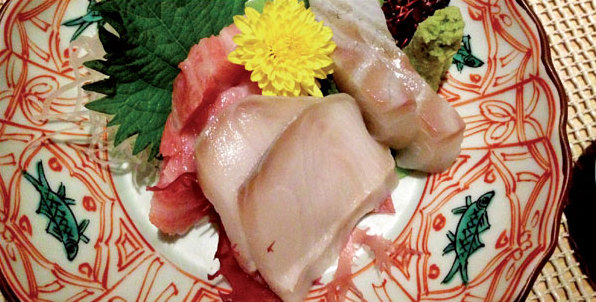Elegant imperial Japanese
 |
|
Kyo-Shun restaurant in Hong Kong serves diners Japanese imperial cuisine. Photos by Pauline D. Loh |
Kyoto is about arts and culture while Tokyo is about setting trends. The cuisines coming out of these cities, too, are as different as night and day. Pauline D. Loh savors the slow food of old Japan in Hong Kong.
Everything here is about pure natural flavors, lovingly cooked the traditional way. The bean curd is made fresh from soybeans grown locally, using water from springs that flow down Kyoto's maple-fringed mountains. Then, they are flown to Hong Kong daily.
The tofu is served many ways at Kyo-Shun, so named to reflect the best of seasonal cuisine from the ancient Japanese capital. Carefully cut out with a floral mold, it is slathered with sweet yellow miso and quickly blasted under the grill and toasted to a deep golden topping.
Or it is served in a special wooden tub that allows the dish to be heated with glowing charcoals, which warm a teapot full of lightly flavored broth that is poured over springwater-poached tofu.
These are flavors you enjoy with a quiet heart, calm mind and cleansed palate.
There is nothing rushed about dining on Japanese imperial cuisine as koto string music plays gently in the background. There is nothing brash and bold, and you can leave the fusion theories to the Tokyo restaurants.
At Kyo-Shun, there is a lot of attention paid to the food served on the table, from the delicate poppy seed-coated single whole chestnut on the appetizer platter to the steamed fiddlehead jelly rolled in toasted mung-bean powder.
The restaurant is one among the trio on top of The One in the middle of Tsim Sha Tsui's Nathan Road, a business venture by Hong Kong celebrity actress Carina Lau, in association with a Chinese businessman.
It has set itself apart from the many Japanese eateries in Hong Kong by its exclusivity, and specialties such as the Japanese clay pot rice varieties served in traditional donabe earthenware fired in Kyoto.
These thick, red-glazed pots are among the oldest pottery in the world, with a history dating back more than 10,000 years.
















